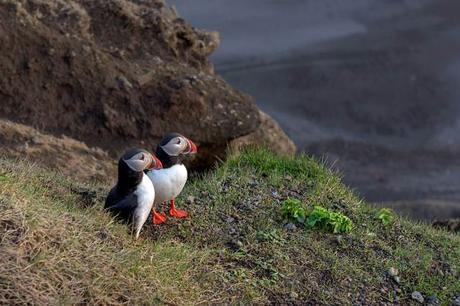
(Sunlit Atlantic Puffins on a cliff overlooking a black sand beach. The female puffin is standing at the entrance of her burrow nest.)
In late May 2015, I traveled to Iceland with two friends (Caesar and Ernie), who are also photographers, to photograph Iceland’s landscapes, seascapes and wildlife. I had high expectations, having seen many incredible photographs of Iceland over the last few years. Iceland’s natural, unusual and unspoiled beauty has become very popular among photographers from all over the world, and after visiting for ten days, it is very obvious why.
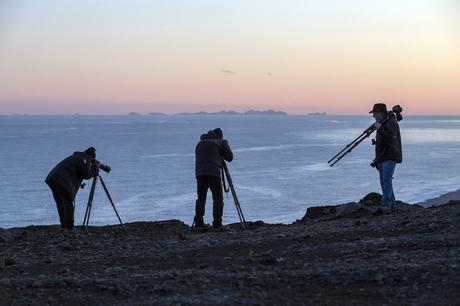
(Ceasar, me and Ernie photographing puffins at sunset on a cliff overlooking the Atlantic and a black sand beach. Photograph by Páll Jökull Pétursson)
To better ensure our trip would be productive, I hired a professional Icelandic landscape photographer and tour guide to take us to Iceland’s iconic locations, as well as those locations that only a local photographer would know. Páll Jökull Pétursson was our guide for ten days and conducted an extraordinary tour. After our 6 hour flight from northern Virginia, Páll picked us up in his four-wheel drive SUV with extra large tires for off-road driving, which was necessary to get to many locations. Páll immediately began driving our preapproved itinerary and route around the island on Ring Road. Páll planned the details of our trip to include hotels, guesthouses and restaurants. If you are considering a trip to Iceland, I highly recommend contacting Páll Jokull Petursson to either conduct your tour or to prepare an itinerary, if you choose to do it on your own.
As you can imagine, after ten long days in Iceland (sunrise was 3:30AM and sunset 11:30PM), I returned with many RAW image files–over 3,500. Many images were bracketed (same shot, but at different exposures), for focus stacking (same shot, but with different focus points), and various views of the same location. I have spent a lot of time reviewing the images, but have not reviewed them all. I am taking my time, and only reviewing them when not distracted, while enjoying the memories. As I have been selecting images, I have been posting some to Facebook, Instagram, 500px and to my website. Therefore, you may recognize some of the images in this article. They are some of my favorites (so far).
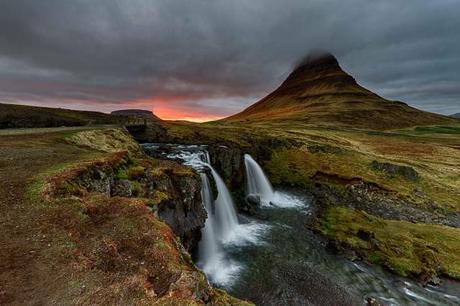
(Kirkjufellsfoss Waterfall with Kirkjufell mountain in the background at sunset – 11:16 PM. Stayed up late after a long day, but it was well worth it.)
I considered different options for writing and sharing some of my many images, such as by each day of the trip, region or subject. I decided to start with a general overview (this article), followed by other articles by subject, as follows:
- Waterfalls (Iceland has many picturesque waterfalls)
- Glacier Lagoon and blue glacier icebergs
- Landscapes and seascapes
- Geothermal activity
- Atlantic Puffins and other wildlife
In this article, I am including some of my favorite images covering the five subject areas. In future articles, I will also include information about the subject, where the image was taken and how it was photographed.
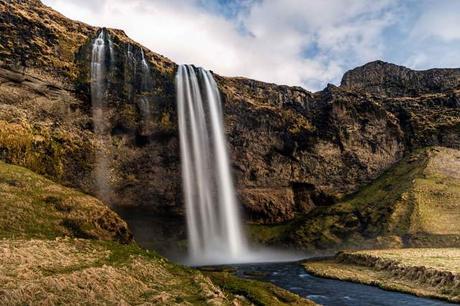
(Seljalandsfoss Waterfall on the Seljalandsá River drops 200 ft over former coastline cliffs.)
Our route around the island was predominantly on Ring Road, a road well named as it circumvents the entire island. The places we visited included all of the locations and wildlife I had hoped to see and photograph, making my trip outstanding in every way. Although it would be difficult to have a bad tour of Iceland, Páll Jökull Pétursson ensured our trip was a success. When I return to Iceland next year, I will be traveling the island again with Páll.
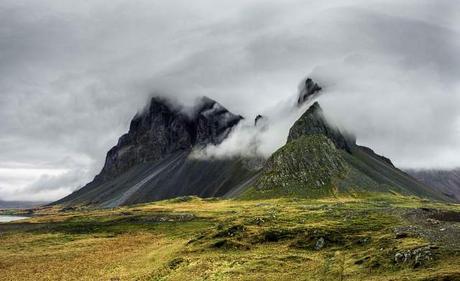
(An amazing view from Ring Road of unusually shaped mountains partially cloud covered that was constantly changing as the wind blew.)
I need to go back to reviewing and processing RAW images; so, I am going to conclude this article with a few representative images of what I will sharing over the next few weeks.
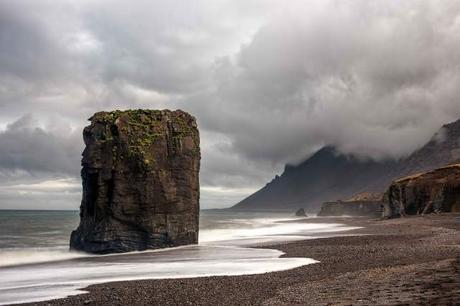
Above, an unusually shaped sea stack, like a square, just a short walk from Ring Road, but a slippery decent to the black sand beach.
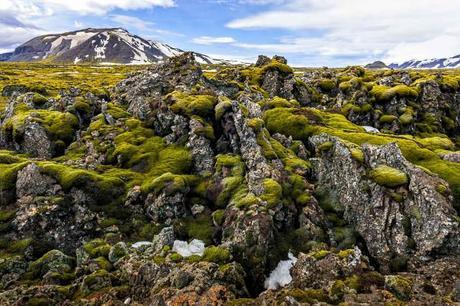
A very old lava field (above) covered in moss at Hellisheidi.
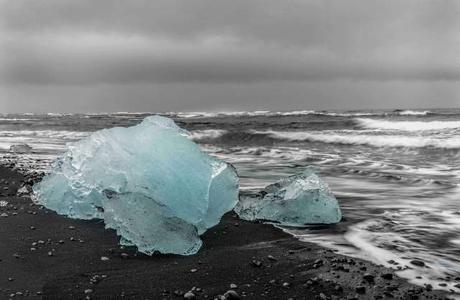
Last, but not least…an amazing location where the remains of glacier icebergs wash up on a black sand beach. Glacial ice is blue because the dense ice of the glacier absorbs every other color of the spectrum except blue – so blue is what our eyes see.
Comments on this article are appreciated and can be entered by clicking on “Comments” found below the Share this: section. You can also read other’s comments there.
